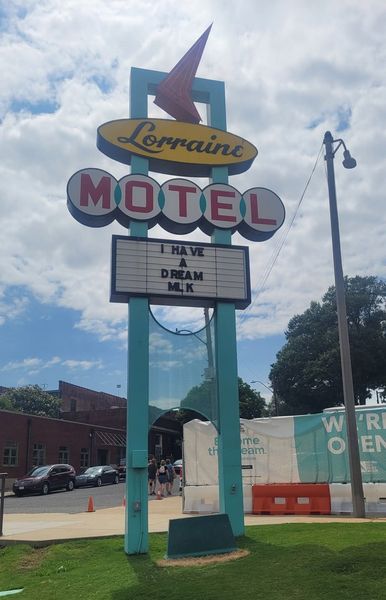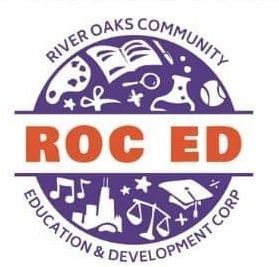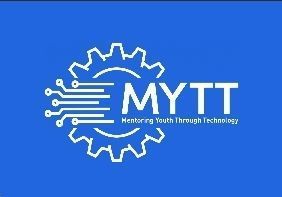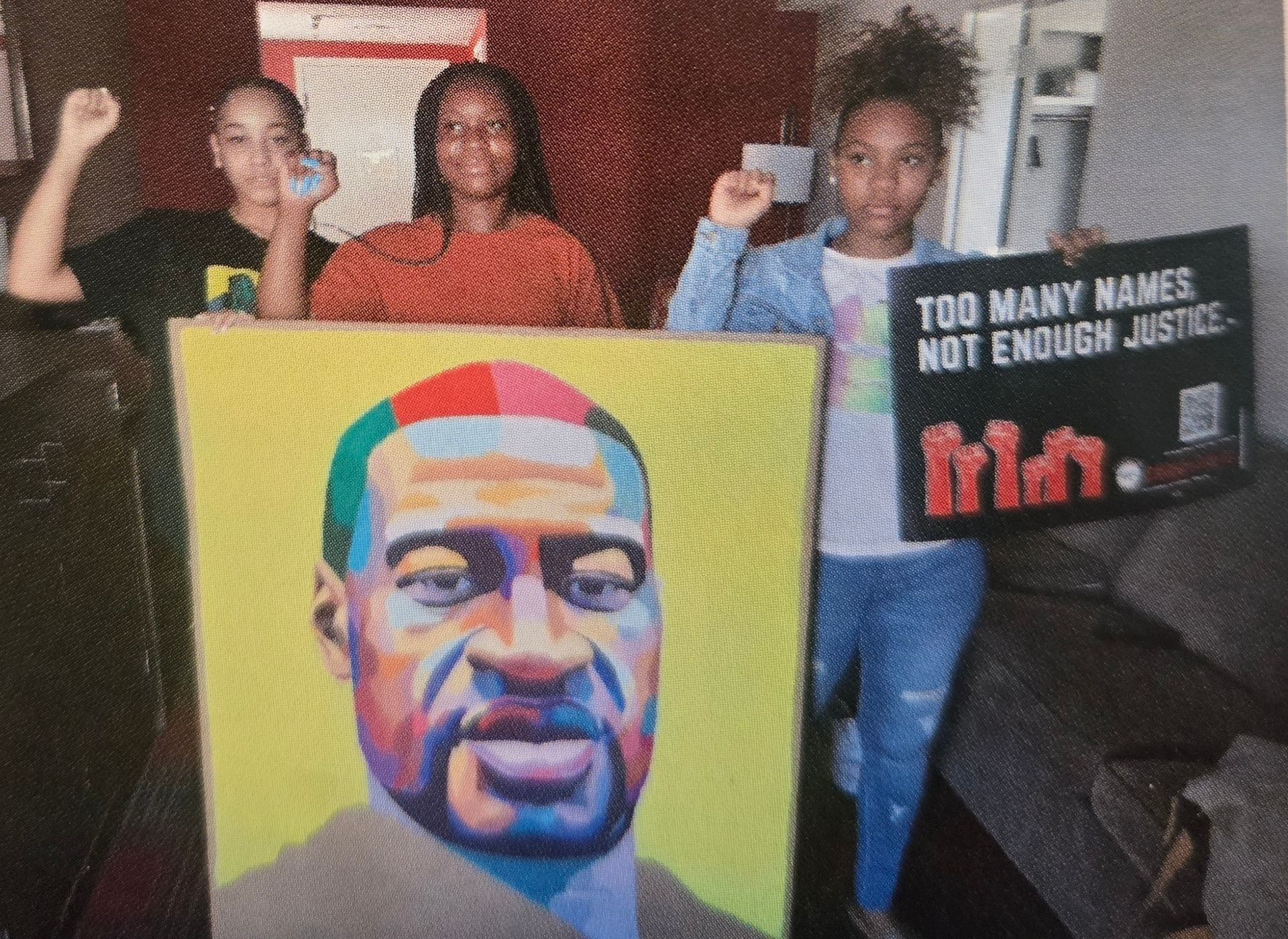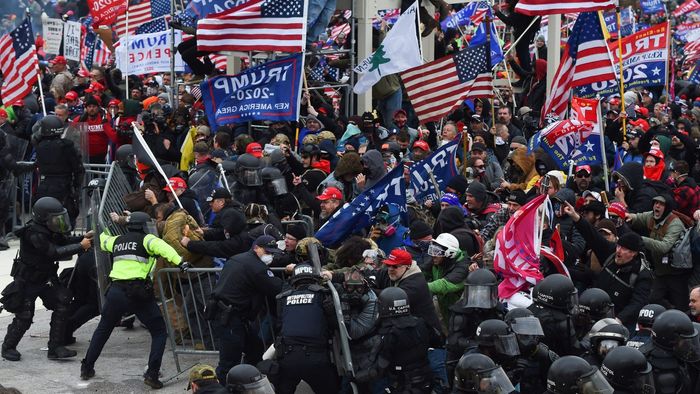
insurrection
On January 6, 2021, the United States Capitol Building in Washington, D.C., was besieged by a mob of supporters of then-President Donald Trump in an attempted self-coup, occurring two months after his loss in the 2020 presidential election. Their aim was to retain his presidency by obstructing a joint session of Congress tasked with counting the Electoral College votes necessary to validate the victory of President-elect Joe Biden. Ultimately, the attack did not succeed in halting the certification of the election results.
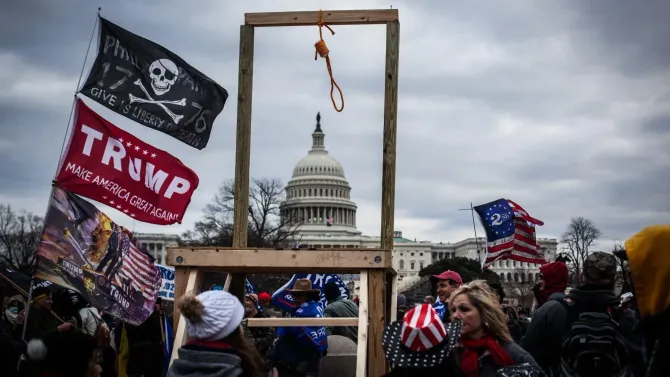
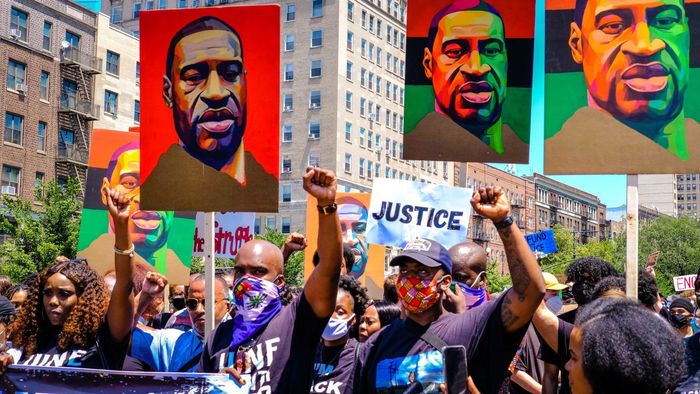
JUSTICE FOR
George FLOYD
The killing of George Floyd, 46, of St. Louis Park — who repeatedly told a Minneapolis police officer he couldn’t breathe as the officer knelt on his neck on May 25, 2020 — sparked days of unrest in Minneapolis and St. Paul and mass protests across the globe over the treatment of Black people by police.
Since then, lawmakers both nationally and locally have debated police reform and whether law enforcement officers must change how they do their jobs. In schools, educators and students have tackled discussions on race and equity, sometimes with controversy. And across Minnesota, community members have marched and come together in a call for change.
In April 2021, former Minneapolis police officer Derek Chauvin — who pressed his knee on Floyd’s neck for more than nine minutes — was convicted of murder and manslaughter in Floyd's death. He was sentenced to 22 1/2 years in prison.
Our Focus
Purpose
To empower and uplift communities by providing accessible education, recreational activities, and civic engagement opportunities that foster personal growth, community development, and societal well-being.
Mission
Our mission is to create a supportive and inclusive environment where individuals of all ages can engage in educational and recreational activities that promote civic responsibility, social equity, and community solidarity.
Objectives
Educational Empowerment: Provide comprehensive educational programs and resources to enhance knowledge, skills, and personal development.
Recreational Enrichment
Offer diverse recreational activities that promote physical health, mental well-being, and social interaction.
Civic Engagement
Encourage active participation in civic duties and community services to build informed, responsible, and engaged citizens.
Community Unity
Strengthen community bonds through collaborative initiatives that address social issues and celebrate cultural diversity.
Outcome
Increased Educational Attainment: Participants will achieve higher levels of academic success and personal growth.
Enhanced Physical & Mental Well-being
Individuals will experience improved health through regular engagement in recreational activities.
Civic Participation
Communities will see an increase in voter turnout, volunteerism, and civic engagement activities.
Stronger Community Ties
A more connected and resilient community, with reduced social disparities and increased support networks. This structure can serve as a foundational guide for CCCL, aligning its programs and activities with clear goals and measurable outcomes.
Policy & Legislation
Advocacy at Every Level of Government
Engaging with elected officials and administrations, from the White House to statehouses and city halls, is central to our mission.
We tackle issues that impact the Black community, including economic opportunity, education, and criminal justice reform, through coordinated efforts at federal, state, and local levels. Our work continues to ensure civil rights and social justice for all.
Critics say DEI programs are discriminatory and attempt to solve racial discrimination by disadvantaging other groups, particularly White Americans. But supporters and industry experts insist the decades-old practice has been politicized and is widely misunderstood.
What is DEI?
Among seven DEI experts and industry leaders CNN has interviewed, most had a shared vision for what constitutes the concept:
- Diversity is embracing the differences everyone brings to the table, whether those are someone’s race, age, ethnicity, religion, gender, sexual orientation, physical ability or other aspects of social identity.
- Equity is treating everyone fairly and providing equal opportunities.
- Inclusion is respecting everyone’s voice and creating a culture in which people from all backgrounds feel encouraged to express their ideas and perspectives.
DEI was created because marginalized communities have not always had equal opportunities for jobs or felt a sense of belonging in majority-White corporate settings, said Daniel Oppong, founder of The Courage Collective, a consultancy that advises companies on DEI.
“That is the genesis of why some of these programs exist,” he said. “It was an attempt to try to create workplaces where more or all people can thrive.”
When Did African Americans Actually Get the
Right to Vote?
The 15th Amendment was supposed to guarantee Black men the right to vote, but exercising that right became another challenge. While the 15th Amendment barred voting rights discrimination on the basis of race, it left the door open for states to determine the specific qualifications for suffrage. Southern state legislatures used such qualifications—including literacy tests, poll taxes and other discriminatory practices—to disenfranchise a majority of Black voters in the decades following Reconstruction.
As a result, white-dominated state legislatures consolidated control and effectively reestablished the Black codes in the form of so-called Jim Crow laws, a system of segregation that would remain in place for nearly a century.
In the 1950s and ‘60s, securing voting rights for African Americans in the South became a central focus of the civil rights movement. While the sweeping Civil Rights Act of 1964 finally banned segregation in schools and other public places, it did little to remedy the problem of discrimination in voting rights.
The brutal attacks by state and local law enforcement on hundreds of peaceful marchers led by Martin Luther King, Jr. and other civil rights activists in Selma, Alabama in March 1965 drew unprecedented attention to the movement for voting rights. Later that year, President Lyndon Johnson signed into law the Voting Rights Act, which banned literacy tests and other methods used to disenfranchise Black voters. In 1966, the U.S. Supreme Court ruled in Harper v. Virginia Board of Elections that poll taxes (which the 24th Amendment had eliminated for federal elections in 1964) were unconstitutional for state and local elections as well.
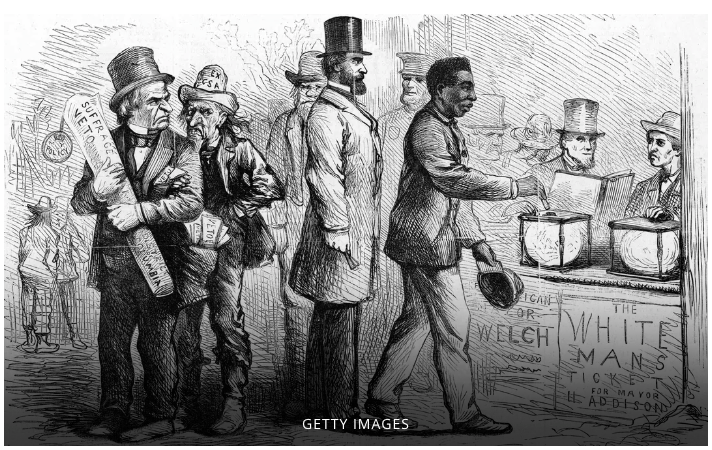
A 1867 political cartoon depicting an African American man casting his ballot during the Georgetown elections as Andrew Johnson and others look on angrily.
Continued Challenges to Black Voting Rights
Before passage of the Voting Rights Act, an estimated 23 percent of eligible Black voters were registered nationwide; by 1969 that number rose to 61 percent. By 1980, the percentage of the adult Black population on Southern voter rolls surpassed that in the rest of the country, the historian James C. Cobb wrote in 2015, adding that by the mid-1980s there were more Black people in public office in the South than in the rest of the nation combined.
In 2012, turnout of Black voters exceeded that of white voters for the first time in history, as 66.6 percent of eligible Black voters turned out to help reelect Barack Obama, the nation’s first African American president.
In 2013, the Supreme Court struck down a key provision of the Voting Rights Act, ruling 5-4 in Shelby v. Holder that it was unconstitutional to require states with a history of voter discrimination to seek federal approval before changing their election laws. In the wake of the Court’s decision, a number of states passed new restrictions on voting, including limiting early voting and requiring voters to show photo ID. Supporters argue such measures are designed to prevent voter fraud, while critics say they—like poll taxes and literacy tests before them—disproportionately affect poor, elderly, Black and Latino voters.
National Civil Rights Museum Lorraine Motel Memphis, TN
Martin Luther King Jr., an American civil rights activist, was fatally shot at the Lorraine Motel in Memphis, Tennessee, on April 4, 1968, at 6:01 p.m. CST. He was rushed to St. Joseph's Hospital, where he was pronounced dead at 7:05 p.m at age 39. He was a prominent leader of the civil rights movement and a Nobel Peace Prize laureate who was known for his use of nonviolence and civil disobedience. The assassin, James Earl Ray, a fugitive from the Missouri State Penitentiary, was arrested on June 8, 1968, at London's Heathrow Airport, extradited to the United States and charged with the crime. On March 10, 1969, he pleaded guilty and was sentenced to 99 years in the Tennessee State Penitentiary. He later made many attempts to withdraw his guilty plea and to be tried by a jury, but was unsuccessful.
Ray died in prison in 1998.
